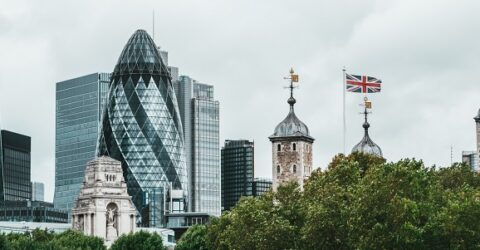How does UK broadband connect to the wider internet?
UK broadband only works as part of a global network, buried beneath the seabed around our coastline.

When you stop to think about it, there’s a certain incongruity to living on an island while enjoying unrestricted access to the World Wide Web.
The internet is a global phenomenon, with every site between California and Canberra accessible with a few keystrokes and mouse clicks.
Yet how can that be when the UK is surrounded by bodies of water? It’s not as if the internet is distributed wirelessly across oceans, after all.
You might assume our internet coverage is provided from space via satellite, but that’s only the case for people with dedicated satellite broadband services.
Instead, the bridge to other nations is a subterranean one, buried beneath the sea bed and ensuring that domestic web-enabled devices remain connected to the global internet.
Subterranean homesick blues
To connect our homes with residents and businesses on other continents, a network of subsea cables has been constructed over the last few decades.
Many of these cables predate the internet’s adoption by the general public, such as the UK-Channel Islands-7 cable, which first linked Guernsey and Devon in January 1994.
Others are more recent arrivals. The Zeus cable between Lowestoft and Zandvoort in the Netherlands was only deemed ready for service last July.
Around the UK’s coastline are several clusters of international broadband cables in close proximity to one another, and often following parallel paths.
There are multiple connections between East Anglia and the Netherlands, Blackpool/Southport and the eastern coast of Ireland, mainland Scotland and its islands.
You might recall last autumn how the Shetland Islands were left without broadband for weeks after the SHEFA-2 cable linking it to UK broadband networks was severed by a fishing vessel.
Conspiracy theorists quickly suggested the Russian Navy actually cut SHEFA-2, as a trial run for a potentially larger attack against pan-European and Transatlantic cables.
In the modern age, such an outage could do serious damage to our productivity and prosperity…
Firmly grounded
It might surprise you to learn that the cables linking UK broadband with its international partners are often only buried half a metre below the seabed.
Reasons include the difficulty of excavating under such high water pressure, the risk of unexploded bombs and the relentless currents at these depths.
However, shallow troughs are more susceptible to being disturbed or damaged, which is something today’s installation specialists are well aware of.
The aforementioned Zeus cable has been buried two to three metres below the North Sea, which should increase its resistance to damage of the kind that affected SHEFA-2.
Like most of its sister cables, Zeus is a miracle of packaging. Containing 192 optical fibres, it can distribute up to 5,200 terabits of digital data per second.
There are around 35 subterranean cables connecting the British coastline to other nations, often starting from relatively obscure locations like Bude in Cornwall.
Needless to say, our communications links with North America are especially prolific, typically terminating at either Long Island (New York) or the eastern New Jersey shoreline.
Each cable is an immense feat of engineering. Vodafone’s 2003 Apollo installation stretches for 13,000 kilometres between Bude and New Jersey.
It’s interesting to note that while there are around ten cables linking the UK and USA, there are only two cables connecting South America and Africa.
The social network
With so much connectivity (between developed nations, at least), information flows seamlessly between countries, as well as within them.
Lodge a data request with a server halfway around the world, and individual data packets will be distributed at lightning speed through numerous nodes (relays) to your device.
Data will often arrive and display within a second of being requested, having made its way along whichever path was best placed to optimally carry it at that precise millisecond.
It’s only thanks to the optical broadband cables in subterranean pipes (capable of distributing data at almost the speed of light) that we can enjoy relatively latency-free online experiences.
Without them, our internet would be far smaller and slower, more parochial, and more easily bent to the will of a government minded to censor or block out external interference.






